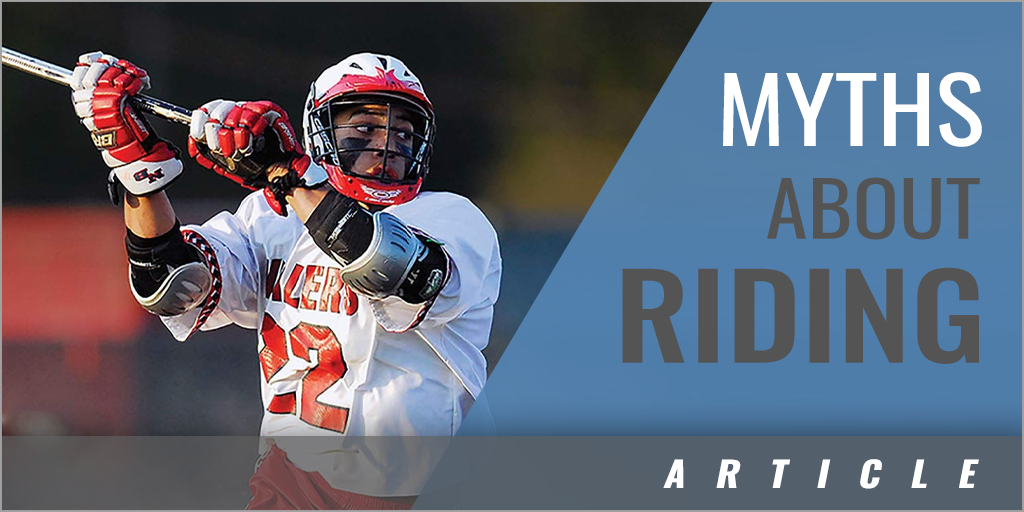|
By: Jack Kaley and Rich Donovan Originally Published in: Lacrosse Essentials Provided by: Human Kinetics Riding is particularly important for teams with a limited number of players. First, let's examine the myth that riding is too time consuming to teach. Not only is it not time consuming, but riding must also be a part of every competitive drill you organize. This includes 1v1, 2v2, 3v3, and up to 10v10. You should also work riding into uneven drills. These drills should not end until the defensive man, group, or team has successfully cleared the ball into the offensive zone or past the midfield line. In essence, you are not working on a micro portion of the game, but rather you are incorporating riding and clearing into every drill, encompassing the bigger picture. If coaches strive to create gamelike environments during practice, then finishing every save, turnover, or ground ball with a ride and clear is as gamelike as you can get. In a game the whistle does not blow when the offense takes a shot (unless you score), and the game doesn't stop when the defense gets control of the ball. This enforces all game conditions as much as possible. All the fundamentals you want your team to master are reiterated by finishing the drill appropriately and that includes riding and clearing. Here are the top three rules for offensive riding:
Recovering and riding after a goalie save or defensive-owned ground ball are most important to the man who shot the ball. He is most vulnerable to being beat on a clear because his momentum is going forward. An important teaching point is that once the ball leaves your stick, you have no control over what happens to it. Rather than watch to see whether you have scored, stop and react to cover the man who was playing you. He might have broken upfield (if he reacted correctly) for the breakout clear. The shooter must make it difficult for him to get open. For any ride to be successful, this man has to be prevented from getting the ball on a breakout. Most often, the shooter can prevent this if he reacts immediately and keeps himself in line with his man and the goalie. Even though his man might be able to get deeper than he can initially, it would take a perfect pass to get the ball to him on a break. This riding technique is difficult but can be mastered through discipline, coaching, and repetition. There is opportunity to work on this every time a shot is taken in practice, whether it is in a 1v1, 10v10, or anything in between. This not only reinforces offensive and defensive principles, but also conditioning and individual and team intensity as well. As far as myth two and riding being too risky, nothing could be further from the truth. It is extremely risky if you don't have a complete riding package because you will give up numerous high-percentage transition scoring opportunities. You will also allow your opponent to hide a player with weak stick-handling skills or to slow the game. |





